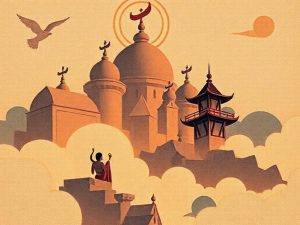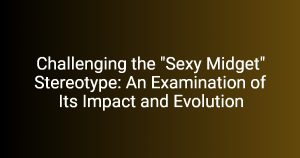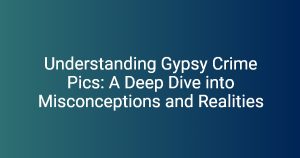The term indianshemales represents a distinctive and crucial segment within the transgender community in India, often misunderstood yet rich in cultural history and diversity. This article aims to provide an in-depth look into the lives, struggles, and realities faced by indianshemales. Understanding their context is pivotal, especially within the complex cultural, social, and historical frameworks that shape their existence in India.
Understanding the Term
Defining “Indianshemales”
In India, indianshemales primarily refers to transgender women who often identify with the broader category of Hijras but may also have unique identities and experiences that distinguish them from traditional Hijras. This group plays a vital role in various cultural contexts, often being involved in ceremonial roles and blessings during events like childbirth and weddings. Their existence pushes the boundaries of gender norms and challenges societal expectations.
Purpose of the Article
The main purpose of this article is to showcase the lives of indianshemales in contemporary India, highlighting their struggles, achievements, and the systemic obstacles they face. By raising awareness of their issues, we can promote understanding, acceptance, and support for this marginalized community.
Historical Context
Traditional Genders in Indian Society
For centuries, the Hijra community has been recognized as a third gender in India, with a history that dates back over a thousand years. Traditionally, indianshemales and Hijras held significant roles in cultural and religious ceremonies, serving as blessings for auspicious events. Their acceptance in these roles signifies an inherent acknowledgment of diverse gender identities in Indian culture.
Evolving Perceptions
However, social perceptions of indianshemales have rapidly changed over the years, especially with the influence of globalization and the LGBTQ+ rights movements worldwide. Historically revered, the Hijra community now confronts increased discrimination and exclusion, requiring a shift in societal attitudes towards acceptance and inclusion.
Demographics and Identity
Understanding Identity
Understanding the identities within the indianshemales community is complex. Notably, while Hijras often identify as a distinct third gender, indianshemales may embrace different gender identity terms that resonate with their personal experiences. Personal narratives contribute to a deeper understanding of their lives, showcasing the diversity within the group.
Population Statistics
Estimating the population of indianshemales poses significant challenges, but reports suggest that they comprise a small percentage of the overall Indian population. Major urban areas tend to have more visible populations due to anonymity and better resources compared to rural locations where social stigma is often more pronounced. Understanding these demographics is crucial for formulating supportive policies and initiatives.
Social Challenges
Discrimination and Stigmatization
Social challenges for indianshemales include severe discrimination in employment, education, and healthcare. Marginalization leads to exclusion from mainstream opportunities, creating an ongoing cycle of poverty and vulnerability. Establishing community support networks is vital for addressing these issues.
Legal Status and Rights
While India made strides in recognizing transgender rights with the 2014 Supreme Court ruling that recognized transgender individuals as a third gender, indianshemales still face significant legal hurdles. The gaps in implementation of rights and protections exacerbate their struggles, highlighting the need for further legal reforms and support mechanisms.
Economic Empowerment
Employment Opportunities
The economic empowerment of indianshemales is crucial for fostering independence and reducing societal stigma. Many remain confined to traditional roles such as begging or sex work due to limited job opportunities. Innovative initiatives aimed at improving education and vocational training can enhance employability and economic stability.
Entrepreneurship and Self-employment
There are inspiring examples of indianshemales who have ventured into entrepreneurship. From starting their businesses to leveraging artisanal skills, their success stories exemplify resilience and determination. Support programs are vital in providing resources to enhance these entrepreneurial pursuits, helping foster a more inclusive economy.
Health and Well-being
Access to Healthcare
Access to healthcare is another frontline issue for indianshemales. The healthcare system often inadequately caters to their needs, resulting in significant barriers to accessing necessary treatments. Inclusive healthcare practices must be developed to ensure that indianshemales receive respectful, competent care without discrimination.
Mental Health Considerations
Mental health is a significant concern within the indianshemales community, as they often deal with stigma, discrimination, and social isolation. Common issues include depression and anxiety, underscoring the need for mental health support systems that are culturally sensitive and inclusive of their unique experiences and challenges.
Cultural Representation
Media Portrayal
The portrayal of indianshemales in media is often sensationalized or stigmatizing. Analyzing representation in films and literature reveals a complex relationship between visibility and acceptance. Positive representation can play a critical role in reshaping societal perceptions and fostering understanding.
Art and Expression
Indianshemales contribute significantly to art and culture, using creative expression as a means of advocacy and identity formation. Through various mediums, their voices convey the richness of their experiences, challenging stereotypes and asserting their rightful place in India’s cultural mosaic.
Community and Support Networks
Organizations and Advocacy
Numerous organizations advocate for the rights of indianshemales, working tirelessly to create support systems and legal frameworks that promote equality. These bodies play a fundamental role in raising awareness, providing resources, and fostering a sense of community among individuals facing similar challenges.
Role of Allies and Advocacy
Allies have an essential role in supporting indianshemales. Advocacy efforts shaped by allyship can lead to broader societal changes, paving the way for acceptance and inclusivity. Awareness campaigns and solidarity initiatives help foster a supportive environment conducive to dialogue and understanding.
Future Perspectives
Trends and Predictions
Emerging trends indicate a gradual shift towards greater acceptance and rights for indianshemales. As legal frameworks evolve, opportunities for social and economic empowerment may improve. With increasing visibility and advocacy, there is potential for significant societal change in the coming years.
Call to Action
Fostering greater awareness and education is crucial for supporting indianshemales. Collective action can make a difference, whether through volunteering, supporting advocacy groups, or spreading awareness in local communities. Everyone has a part to play in challenging stigma and promoting acceptance.
Conclusion
Recap of Key Insights
Understanding the multifaceted experiences of indianshemales is vital to creating a more inclusive society. From challenges in health and employment to the need for representation, these issues highlight the importance of collective action and advocacy.
Final Thoughts
Supporting the indianshemales community is critical for promoting equality, acceptance, and respect for all individuals, regardless of gender identity. Only through understanding and awareness can meaningful change be achieved.
Key Statistics Table
| Aspect | Figures |
|---|---|
| Estimated Population of Indianshemales | Approx. 490,000 – 1,000,000 |
| Percentage of Urban vs. Rural | 70% Urban, 30% Rural |
| Common Employment Sectors | Begging, Sex Work, Art, and Performance |
| Reported Mental Health Issues | Estimated 45% facing depression or anxiety |
FAQs
1. What does the term “Indianshemales” refer to?
Indianshemales primarily refers to transgender women in India, many of whom identify with the Hijra community but have unique experiences and identities.
2. What challenges do Indianshemales face?
Indianshemales face discrimination in various sectors, including employment and healthcare, as well as social exclusion and stigma.
3. How is the legal status of Indianshemales in India?
India recognizes transgender individuals as a third gender, but many legal and social gaps remain, affecting the rights of indianshemales.
4. What are some successful initiatives for Indianshemales?
Several organizations work towards improving education, vocational training, and healthcare access for indianshemales, with some individuals successfully pursuing entrepreneurship.
5. How can individuals support the Indianshemales community?
Individuals can support indianshemales by volunteering, advocating for their rights, and promoting greater awareness and acceptance in their communities.
6. Why is representation important for Indianshemales?
Positive representation in media and culture can help reshape societal perceptions, challenge stigma, and foster acceptance of indianshemales.
7. What mental health issues are common among Indianshemales?
Common mental health issues include depression and anxiety, often stemming from discrimination and social isolation.
8. Are there specific organizations that help Indianshemales?
Yes, various NGOs focus on advocating for the rights and well-being of indianshemales, providing support and resources.
9. How has globalization influenced the life of Indianshemales?
Globalization has amplified visibility and awareness of LGBTQ+ rights, influencing how indianshemales are perceived and treated in society.
10. What are the future trends for Indianshemales?
Favorable trends include greater societal acceptance, legal recognition, and increased opportunities for economic empowerment and integration.




